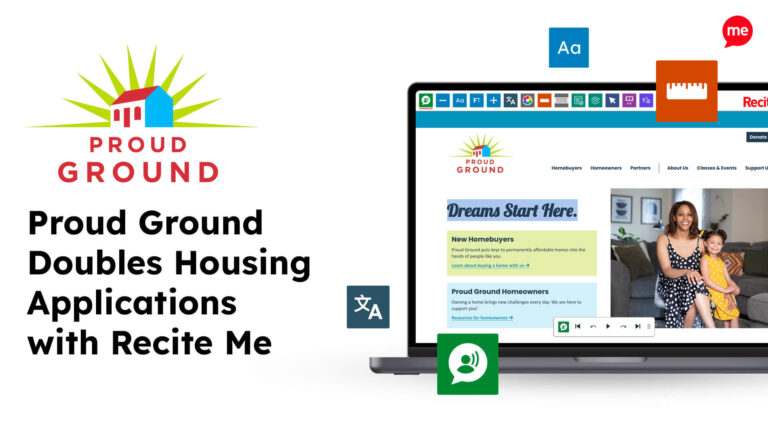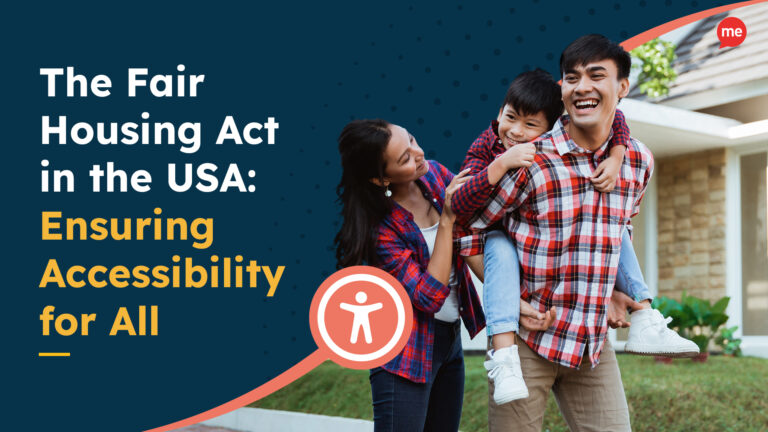Download Free Housing Accessibility Guide
Download NowFinding suitable housing can be a significant challenge for individuals with disabilities. Physical accessibility within properties is a well-known issue. However, ensuring the digital accessibility of housing information and services is equally critical.
In this quick guide, we’ll explore the barriers faced by individuals with disabilities, detail the laws in place to prevent discrimination, highlight some of the organizations dedicated to assisting our disabled community, and outline best practices for making housing and housing information and services more accessible.
Why Do Individuals with Disabilities Struggle to Find Housing?
Access barriers typically fall into one of two categories: physical or digital. Here’s a breakdown of critical factors.
Physical Accessibility Considerations
- Entry and exit – Many properties lack ramps, wider doorways, and other access features necessary for wheelchair accessibility.
- Interior spaces – Bathrooms and kitchens often lack features like grab bars, roll-under sinks, and adjustable countertops that are essential for independent living.
- Adaptive features – Essential technologies like stairlifts, accessible appliances, and home automation systems are often not included in standard housing plans.
Digital Accessibility Considerations
- Incompatibility with screen readers – Many housing websites are not designed to work with screen readers, making it difficult for visually impaired users to navigate and access information.
- Complex navigation – Websites that are not keyboard navigable or incorporate time-sensitive elements hinder users with dexterity issues.
- Inaccessible multimedia content – Videos and audio content without captions or transcripts exclude individuals with hearing impairments from accessing essential information.
- Inaccessible online application forms – Form filling and submission is often complicated by insufficient instructions, poorly labeled fields, difficult-to-navigate interfaces, and the lack of support for assistive technologies.
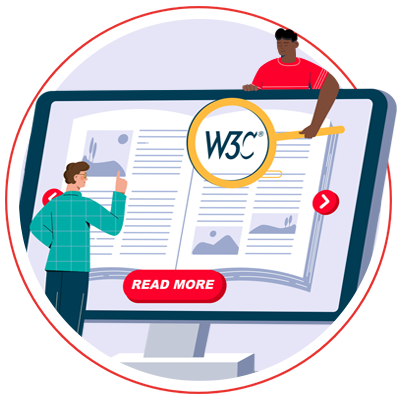

Online Accessibility and Inclusion Toolkit
Our 40-page Digital Accessibility & Inclusion Toolkit helps businesses break down online barriers and make a real impact. It offers practical advice on all aspects of digital accessibility, from writing an accessibility statement to accessible website tips and inclusive hiring.
Laws that Impact Housing and Housing Assistance
As a society dedicated to the American Dream—the concept that every person has the freedom and opportunity to succeed and attain a better life—several laws are in place to prevent discrimination against individuals with disabilities in both physical and digital realms.
1. The Fair Housing Act (FHA)
Overseen by the U.S. Department of Housing and Urban Development (HUD), The Fair Housing Act prohibits discrimination in access to housing and housing services based on several protected characteristics, including disability. It mandates reasonable accommodations be made to ensure equitable access for everyone. For example:
- Landlords are required to allow and make modifications to properties to make them physically accessible.
- Housing authorities and organizations are legally required to ensure that individuals with disabilities have equitable online access to information and services.
2. Section 508 of the Rehabilitation Act
Section 508 requires that all federally created, owned, or published electronic and information technology (EIT) is equally accessible to disabled employees and members of the public. This includes websites, mobile applications, and an array of other digital services, including (but not limited to):
- Electronic documents
- Video and multimedia content
- Emails and newsletters
- Customer service chatbots
3. The Americans with Disabilities Act (ADA)
The Americans with Disabilities Act ensures that people with disabilities have equal opportunities in all areas of public life, including access to housing. It sets standards for physical accessibility, such as wheelchair ramps and accessible bathrooms, and mandates that housing services be both physically and digitally accessible. The most relevant ADA accessibility standards for the housing sector fall under Titles II, III, and IV, which relate to:
- State and Local Government Public Services (Title II)
- Public Accommodations and Services Operated by Private Entities (Title III)
- Telecommunications (Title IV)
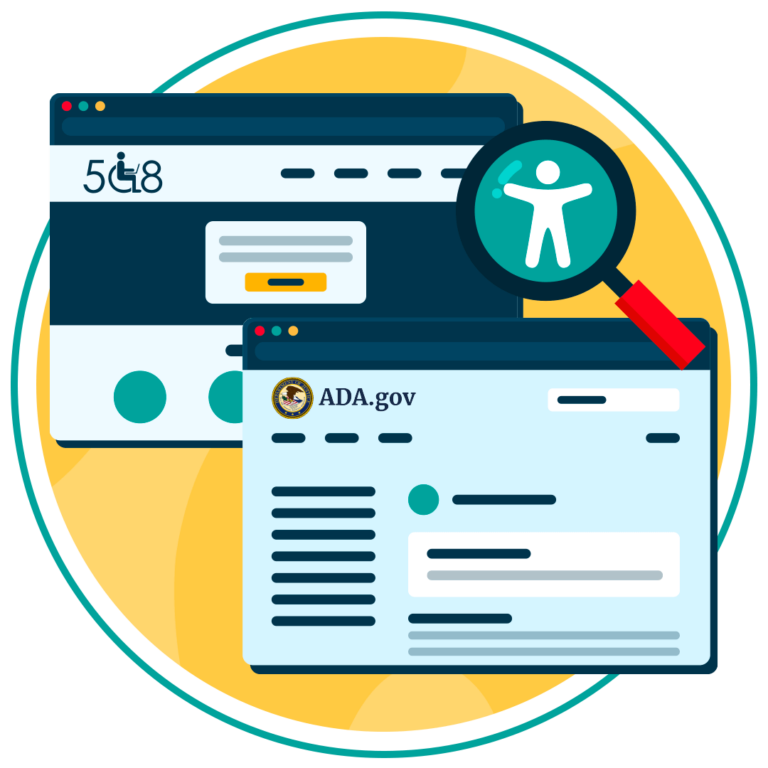
Organizations Dedicated to Helping Individuals with Disabilities
Several non-profit organizations provide advice and assistance regarding accessible housing and accessible housing services. Here are a few notable examples.
Habitat for Humanity
Habitat for Humanity is a global organization with several regional offices in the US. The organization is committed to building accessible homes for individuals with disabilities and improving the accessibility of existing homes for families of low-income or disadvantaged backgrounds. Habitat for Humanity teams work alongside families to create homes that meet their specific accessibility needs. Recite Me is proud to be working alongside several Habitat for Humanity divisions already, including:

The National Disability Institute
The National Disability Institute empowers people with disabilities by offering resources for accessible housing and financial stability. They provide workshops, webinars, and one-on-one counseling to help individuals with disabilities understand their housing rights, access funding for home modifications, and manage their finances effectively. The institute also provides information and support for finding homes that meet accessibility standards.
National Council on Independent Living (NCIL)
National Council on Independent Living (NCIL) is a membership organization that advocates for the right of people with disabilities to live independently in their communities. It offers resources detailing accessible housing policies, housing rights, funding for home modifications, and best practices for creating accessible housing.
National Council on Independent Living (NCIL)
National Council on Independent Living (NCIL) is a membership organization that advocates for the right of people with disabilities to live independently in their communities. It offers resources detailing accessible housing policies, housing rights, funding for home modifications, and best practices for creating accessible housing.
The Arc
The Arc is a national organization dedicated to promoting and protecting the rights of people with intellectual and developmental disabilities. It offers housing assistance programs that help individuals find and maintain accessible, affordable housing. It also advocates for policies that increase housing options and support services for people with disabilities.
How to Make Housing Information and Services More Accessible to Adults with Disabilities
For organizations struggling to make their information and services more accessible, here are a few essential action points to consider.
1. Build an Accessible Website
The minimum baseline for ‘making a website accessible’ is based on globally recognized Web Content Accessibility Guidelines (WCAG) standards, version 2.1, Level AA. Key considerations include ensuring:
- Consistent structure and formatting.
- Keyboard-only accessibility.
- Compatibility with screen readers and other assistive technologies.
2. Use Inclusive Imagery and Multimedia
Including visual representations of individuals of various backgrounds and abilities helps people know that your services are for them. You’ll also need to consider the accessibility of the media you use online by providing:
- Alternative text for images.
- Closed captions and audio descriptions on videos.
- Transcripts for audio content.
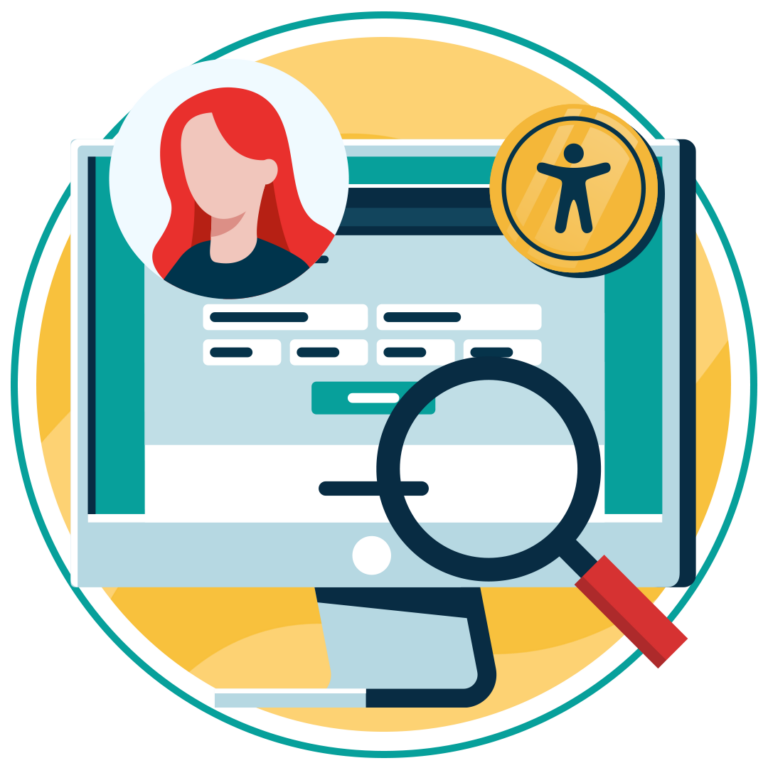
3. Create Accessible Application Forms
To ensure the people you’re aiming to help can get in touch with you effectively, you’ll need to design forms with transparent instructions that are easy to navigate and fill out using assistive technologies. Best practices include:
- Ensuring fields are properly labeled, and that error messages provide clear corrective action points.
- Providing alternative options to standard online forms – like plain text or accessible PDF versions.
- Allowing applicants to submit applications in alternative ways, such as via email or phone.
4. Design an Inclusive Selection Process
Make the process fair and inclusive by accommodating different needs during interview and selection phases. This may involve:
- Training employees about unconscious bias.
- Being flexible with interview methodologies, schedules, and locations.
- Providing additional resources in alternative formats.
5. Seek Expert Advice
Utilizing resources from organizations that specialize in accessibility is one of the best ways to stay informed about best practices and emerging trends. For example, Recite Me offers a suite of on-demand accessibility software to help with:
Finding accessibility issues is now easier than ever. Recite Me offers a free automated scan of your website’s homepage to highlight non-compliance. You’ll get recommendations on how to fix them, helping to improve your accessibility score.


